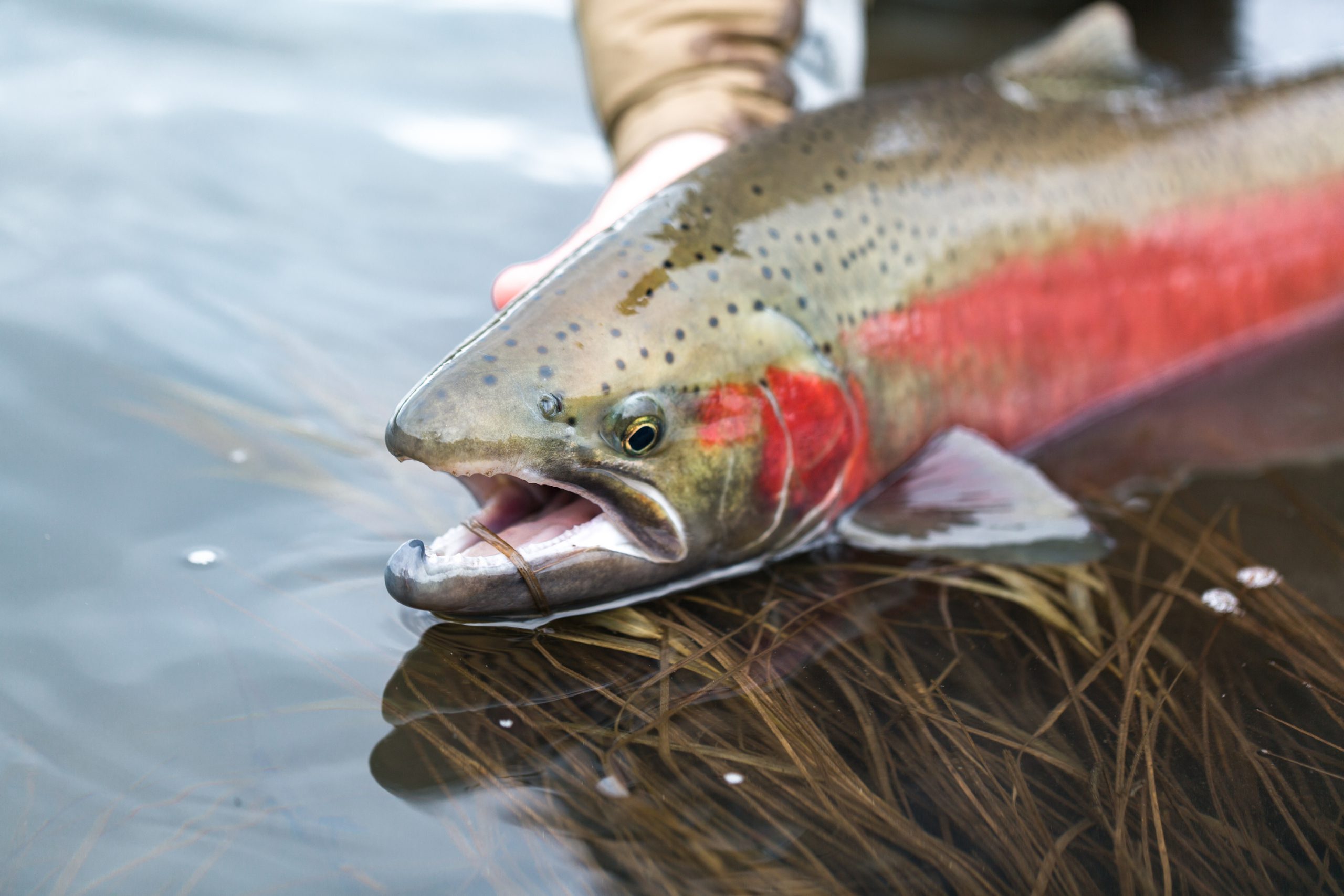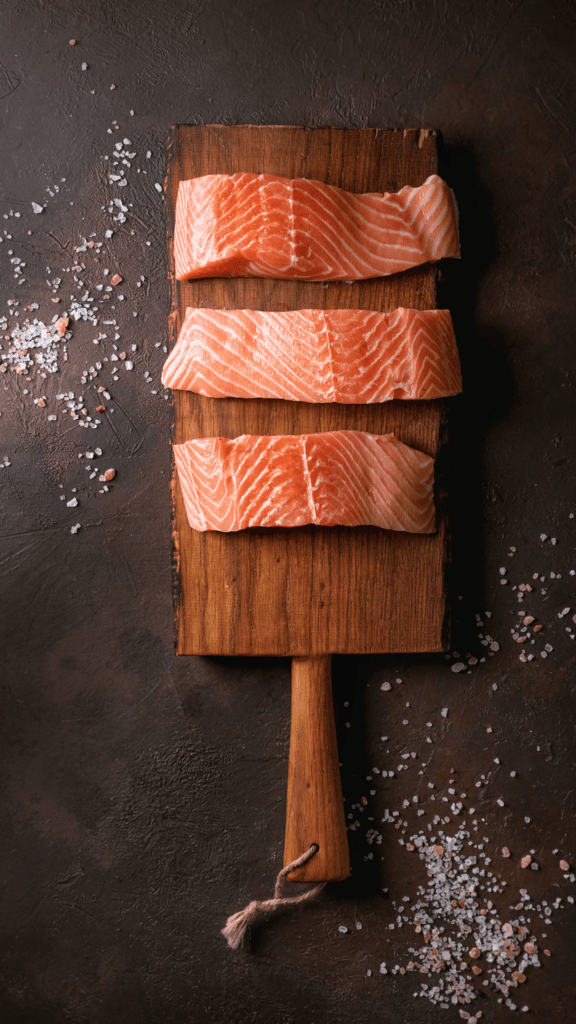Even though they look and act alike, steelhead and salmon are not the same! This detailed guide will teach you the difference between steelhead and salmon. It talks about everything you need to know about these two tasty types of fish, from how to cook them to how to serve them and what to pair them with.
Even though salmon and steelhead look and act a lot alike, they are not at all the same! This guide will teach you the main differences between steelhead trout and salmon. From their different tastes to appearances to how to prepare them, this guide has you completely covered.
Salmon and steelhead are two popular seafood choices that are often confused for one another Though they share some similarities, there are several key differences between salmon and steelhead when it comes to biology, appearance, taste, price, and more. This comprehensive guide breaks down everything you need to know about how salmon and steelhead compare
Biology
Salmon and steelhead belong to the same scientific family (Salmonidae) and genus (Oncorhynchus). However, they are separate species.
Steelhead are a type of rainbow trout that migrate from freshwater rivers and streams to the ocean, then back to freshwater to spawn. Unlike Pacific salmon steelhead do not always die after spawning and can make the migration multiple times.
The salmon live in the ocean for most of their lives, but they come back to the rivers and streams where they were born to spawn. Depending on the species, salmon may or may not die after spawning.
So while salmon and steelhead have similarities in their life cycles, steelhead are biologically classified as trout while salmon have their own distinct species
Appearance
At a glance, salmon and steelhead look very similar. They both have sleek, silvery bodies with spots on their backs and tails. However, there are some subtle differences in appearance that can help tell them apart:
-
Skin color: Steelhead’s skin is typically more silvery and less spotted than salmon.
-
Flesh color: The color of salmon’s flesh can range from pale pink to bright red-orange, depending on the species and diet. Steelhead flesh tends to be paler pink or orange.
-
Size: Steelhead are generally smaller, reaching about 25 inches long on average. Salmon can surpass 3 feet in length depending on the species.
-
Markings: Some steelhead have a faint pink or red stripe along their sides. Salmon never display this stripe.
So while not foolproof, paying close attention to skin, flesh and size can help identify whether you’re looking at a steelhead or salmon.
Taste
When it comes to taste, steelhead and salmon have their differences as well.
Steelhead tend to have a milder, sweeter flavor compared to salmon. Their flesh is also flakier in texture.
Salmon have a richer, more pronounced fishy taste. The flavor can range from moderately strong (coho) to very strong (sockeye). Texture also varies between salmon species, from flaky to firm.
So if you’re looking for a more delicate flavor and tender meat, steelhead is the way to go. For a robust salmon flavor, go with salmon. Of course, taste preferences vary!
Price
In general, farmed steelhead is less expensive per pound compared to farmed Atlantic salmon. This is primarily due to differences in supply and demand.
However, for wild-caught fish, salmon often fetches a higher price than steelhead. The availability of wild steelhead is greater compared to many threatened wild salmon populations, like king salmon.
Other factors impacting price are fishing method, whether the fish is whole or filleted, freshness, fish size, and location of purchase. Always check prices in your area since they can vary significantly.
Nutrition
Steelhead and salmon are both packed with nutrients and heart-healthy omega-3 fatty acids.
Per 3.5 ounce serving, steelhead contains:
- 131 calories
- 3.5 grams fat
- 23 grams protein
- Vitamin B12, selenium
Salmon contains:
- 175 calories
- 10 grams fat
- 22 grams protein
- Vitamin B3, B5, B6, B12, D, selenium, potassium
So while the protein content is similar, salmon contains more omega-3s and calories due to its higher fat content. The vitamin and mineral content differs slightly as well.
Sustainability
For wild-caught fish, some salmon species like king and coho are classified as threatened or endangered. Steelhead populations have declined as well, but some hatchery-raised steelhead is available.
For farmed fish, look for reputable sources that use responsible aquaculture practices to ensure sustainability. Both farmed steelhead and salmon can be sustainable options.
Cooking
Steelhead and salmon can be prepared using very similar cooking methods including baking, grilling, pan frying, poaching and smoking.
Due to its oilier flesh, salmon tends to retain moisture better when cooking. Steelhead can dry out more easily. Adjust cook times as needed based on thickness of fillets.
Flavor pairings that complement both fish include citrus, dill, mustard, soy sauce, garlic and ginger.

Tips for cooking with steelhead
Steelhead is a great fish to use when cooking for someone who doesn’t like fish or when you want something lighter than salmon. Its light and delicate flavors will please everyone and it’s easy to cook in a variety of ways. Check out these tips before getting started:
- Steelhead can be smoked, grilled, pickled, cured, baked, poached, sautéed, or poached.
- It’s okay to put frozen fish in the fridge for up to two days before cooking it.
- Simple spices, such as butter, lemon, salt, black pepper, and fresh herbs, go best with its delicate flesh.
- Put my Lemon Butter Dill Sauce or any of these 30 Classic Sauces for Fish on top of the cooked fish for a fancier look.
- For this meaty fish, choose a rich and flavorful white wine, like a Chardonnay that has been aged in oak.
- Salmon goes well with any wine, even a light Pinot Noir or Rosé.
Is steelhead a salmon or a trout?
It’s up for debate whether steelhead is a trout or salmon. Steelhead act very similarly to Pacific salmon since they migrate from freshwater to the ocean and eat the same diet. Others believe they’re definitely trout because of their repeated spawning (which salmon do not do).
Long story short, steelhead is essentially a trout that acts just like a salmon.

Steelhead vs. Salmon
FAQ
How is steelhead different from salmon?
How to tell a steelhead from a salmon?
Is Costco steelhead trout or salmon?
Are steelheads good to eat?
What is the difference between steelhead and salmon?
Their bodies are long and slender, usually weighing between 4 and 8 pounds. The flesh has a bold pink-red color that’s a touch more vibrant than steelhead flesh. Salmon has a rich, oily, fatty, and buttery flavor. It’s often described as being more “fishy” than trout. When cooked, salmon becomes tender, flaky, and meaty.
Which is better, salmon or tuna?
Wild salmon is healthier, but it is also harder to find and more expensive. But if we compare farmed salmon with wild tuna, tuna wins.
How big do steelhead & salmon get?
Steelhead can grow up to 45 inches in length and weigh up to 55 pounds, although the average size is typically around 8 to 11 pounds. In comparison, most salmon species range in size from 4 to 8 pounds, although some species can grow larger. The size of steelhead and salmon can also depend on their age, habitat, and diet.
What is the difference between steelhead & Chinook salmon?
Some salmon species are of a similar size to steelhead, while pink salmon average anywhere from 5-10 pounds. Chinook salmon are typically much larger than steelhead, ranging from 30-120 pounds and nearly 5 feet in length! Steelhead trout have white mouths and gums, while some salmon species have a dark or black mouth and gumline.
